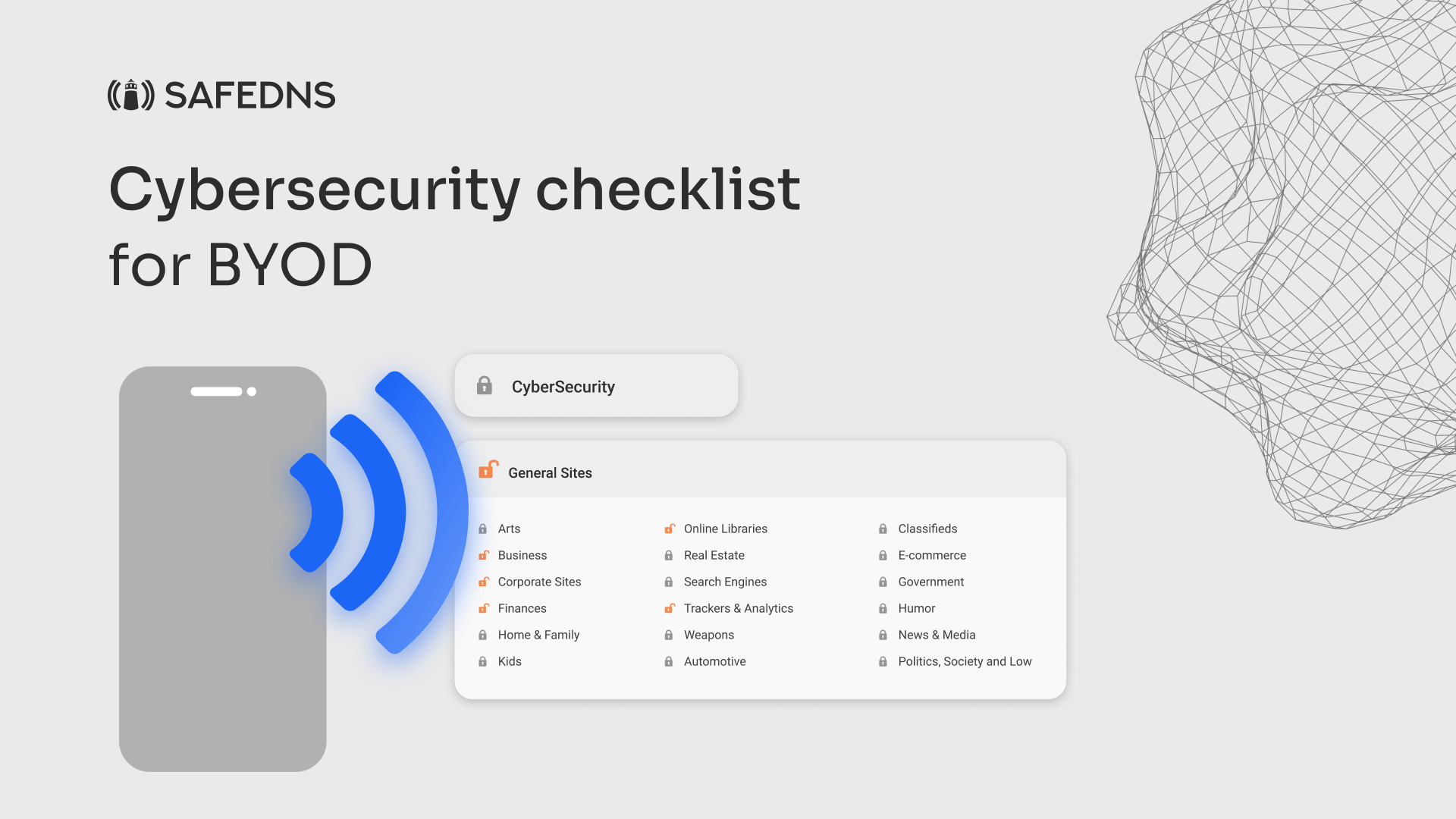
The BYOD Cybersecurity Checklist
With the proliferation of smartphones, tablets, and laptops, employees are no longer tied to their office desktops. BYOD, which stands for Bring Your Own Device, allows them to use their personal devices for work-related tasks, improving flexibility and remote work capabilities. However, this convenience also poses challenges for IT departments, security teams and corporate devices, as it brings about various BYOD security risks.
BYOD (Bring Your Own Device) combines personal and professional data, posing unique challenges for organizations. Personal mobile devices, including personal computers, contain sensitive company data like emails and social media, gaining access to corporate networks when used for work. This merger requires careful risk assessment and security measures to prevent data leakage and unauthorized access.
The main concern is unauthorized access to corporate data if a personal device is lost or stolen, leading to data breaches, financial loss, and reputational harm. Using personal devices outside the organization's network also invites malware and phishing risks, compromising data and system access, particularly when dealing with multiple devices.
Moreover, BYOD complicates regulatory compliance, as different industries and locations have specific data protection laws. Non-compliance can lead to severe penalties and legal issues, emphasizing the need for a thorough BYOD policy to meet legal requirements and address security concerns.
Cybersecurity checklist for BYOD
To ensure the security of your organization's data and networks in a BYOD environment, consider implementing the following checklist or BYOD security solutions:
1. Establish Clear BYOD Policies:
- Create comprehensive BYOD policies that cover acceptable device usage, data handling practices, and security requirements for both personal and corporate devices.
- Define procedures for device registration, monitoring, and incident response, especially when dealing with lost or stolen devices.
2. Educate and Raise Awareness:
- Conduct regular cybersecurity training for employees to educate them about BYOD risks and best practices.
- Promote strong password practices and implement multi-factor authentication (MFA).
3. Implement Device Management Solutions:
- Utilize Mobile Device Management (MDM) or Enterprise Mobility Management (EMM) tools for centralized device control.
- Enforce encryption, remote wipe capabilities, and application whitelisting.
4. Network and Data Security:
- Segment BYOD devices on a separate network to isolate them from critical internal networks.
- Implement network security measures like firewalls, intrusion detection systems, and VPNs for secure data transmission and safeguarding business data.
5. Application and Access Controls:
- Review and approve applications before installation on BYOD devices.
- Monitor and restrict application permissions to minimize unnecessary access.
6. Regular Updates and Patch Management:
- Ensure all BYOD devices, personal computers included, have the latest operating system and software updates.
- Implement a policy for prompt installation of security patches.
7. Data Encryption and Backup:
- Enforce data encryption for both data at rest and in transit on BYOD devices.
- Set up automated backup solutions and develop a data recovery plan.
8. Incident Response Planning:
- Develop a comprehensive incident response plan specific to BYOD security incidents, outlining steps for addressing lost or stolen device incidents.
- Define roles and responsibilities for handling breaches and security events.
9. Compliance and Legal Considerations:
- Ensure compliance with data protection regulations (e.g., GDPR, HIPAA) in your BYOD policy.
- Align BYOD policies with legal requirements and industry standards.
10. Regular Security Audits and Employee Offboarding:
- Conduct routine security audits and vulnerability assessments of BYOD devices.
- Establish a protocol for securely removing data and access when an employee leaves the organization.
How SafeDNS can help
It's important to understand that while a thorough checklist is crucial for minimizing BYOD risks, adopting a strategic and multi-layered approach is the key to successfully navigating the various challenges. Partnering with a trusted cybersecurity ally can significantly enhance your organization's ability to achieve comprehensive protection.
SafeDNS provides robust web filtering and content categorization capabilities, which serve as crucial layers in your multi-pronged security approach. By effectively filtering web content, it ensures that BYOD users access only safe and relevant websites, mitigating the risk of malicious attacks and inadvertent data breaches.
Conclusion
BYOD environments offer significant advantages, but they also introduce a multitude of cybersecurity challenges. Organizations must prioritize security to protect sensitive data, maintain compliance, and safeguard their reputation. Implementing a comprehensive cybersecurity checklist for BYOD is a crucial step in ensuring that employees can use their devices securely while minimizing risks, especially when dealing with a lost or stolen device.
Remember, mobile security in BYOD environments is an ongoing process, and staying vigilant is key to success. Regularly review and update your BYOD security policy and procedures, monitor the threat landscape, and adapt your security measures accordingly. With the right approach, you can harness the benefits of BYOD without compromising your organization's cybersecurity posture. Partnering with cybersecurity allies like SafeDNS can enhance your organization's ability to achieve comprehensive protection and mitigate BYOD security risks.
Take advantage of the SafeDNS trial period and try all the best features

